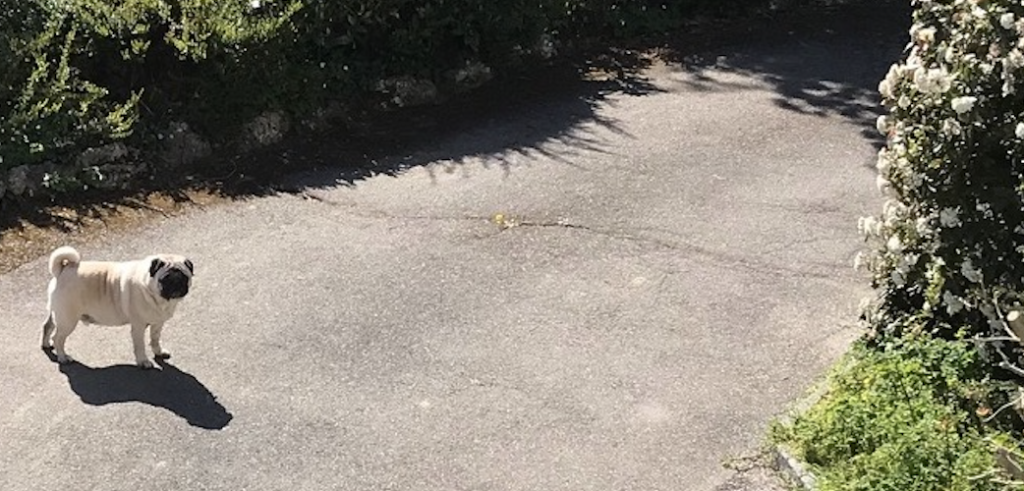

First of all, thank you, dear readers. I can hardly believe it but Madam Mayo blog has been zinging around the planet for 15 years.
It feels peculiar to say it, but it is a fact: with Madam Mayo blog I am one of the pioneers of literary blogging, so I thought I’d take this occasion to offer a few reflections on how Madam Mayo has evolved along with the blogosphere, and where it’s all going.
I started posting in 2006, keeping at it steadily ever since, even while persistently scratching my head over the nature of the genre and pondering my own motivations for continuing. Suffice to say, Madam Mayo blog started as a wee adventure born of curiosity one lazy afternoon, then as I was promoting my anthology Mexico: A Traveler’s Literary Companion and a new paperback edition of my travel memoir, Miraculous Air, it quickly morphed into near-daily posts that resembled tweets—this before the advent of Twitter. Younger readers who do not recall the pre-Internet age of publishing might find it hard to believe, but writers such as myself actually got paid, sometimes hundreds of dollars, for their articles, plus a few fork loads more for accompanying photographs. In 2006 it therefore did not occur to me to craft a proper article and serve it up for free on my (the word then pronounced with disdain) blog.
Then came Twitter. As I experimented with Twitter and other social media, and then slowly…. backed…. away…. from social media, and the publishing world went warp speed into gawdnozewhut, Madam Mayo blog, which I quite enjoyed writing, began to develop into something a little meatier.
In recent years I’ve been posting on Mondays, mainly about my own works, past or in-progress, with the second Monday of the month reserved for an article for my writing workshop students and anyone else interested in creative writing; and the fourth Monday for a Q & A with another writer. In 2021 I’ve begun dedicating first Mondays to “Texas Books” wherein I talk about one or more noteworthy works from the Texas Bibliothek, my current project’s working library.
If you’re new to Madam Mayo blog, here are a few sample posts from recent years:
From the Texas Bibliothek:
The Sanderson Flood of 1965; Faded Rimrock Memories; Terrell County, Texas: Its Past, Its People
February 1, 2021
A Glimpse of the New Literary Puzzlescape
November 2, 2020
Oscar Wilde in West Point, Honey & Wax in Brooklyn
January 20, 2020
Q & A with Poet Barbara Crooker on the Magic of VCCA, Reading, and Some Glad Morning
December 23, 2019
Q & A: Amy Hale Auker, On Ordinary Skin: Essays from Willow Springs
November 26, 2018
On Seeing as an Artist or, Five Techniques for a Journey to Einfühlung
October 24, 2016
> See also Faves.
Most of what I have to say about Madam Mayo blog and blogging as a genre I said in a panel for the AWP writers conference back in 2014: “Writers Blogs and My Blog: Eight Conclusions After 8 years of Blogging.” In sum:
# 1. Maybe not everyone else is, but I remain charmed by the name of my blog, Madam Mayo.
#2. Whoa, blogging has an opportunity cost!
#3. But on the plus side, like a workout sprints for a marathoner, blogging helps me stay in shape as a writer.
#4. Although my ego would like Madam Mayo blog to draw legions of passionate followers, all perched at the edge of their seats for my next post, ready to fly to their keyboards with their hailstorm of comments… The fact is, writing that strives for an ever-larger following is not the best strategy for me as a literary artist or as a person.
#5. Not all, certainly, but a sizable number of people who trouble to comment on blogs seem stuck in Emotional Kindergarten.
#6. Blogging is very much like publishing a literary short story or book— it goes out into the world to an opaque response.
#7. More on the plus side: sharing what I call cyberflanerie and celebrating friends and colleagues and books and all wonder of things is a delight.
#8. Madam Mayo blog is not so much my so-called “platform,” but rather, a net that catches certain special fish— the readers who care about the things I care to write about.
Of course I do have a few things to add to those 8 conclusions, another 7 years having moseyed on by, to wit:
Madam Mayo blog is:
-a form of service– to my readers, my workshop students, and fellow writers
-a broadcast of news of my works via both RSS feeds and search engines
-a showcase for my works (excerpts from my books, articles, translations, and podcasts)
-a record of sorts (my reading, publications, thinking on various topics)— ye olde “weblog”
-a virtual filing cabinet for some of my notes and other research (for example)
-a yoga
-an exercise in will
-just playing in the editor-and-“house style”-free fun zone
It seems that, with noted exceptions, most of the literary bloggers active back in 2006-2010 have quit the game or turned to posting only infrequently. On the other hand, it has not escaped my notice that many of the more popular bloggers now invite donations via PayPal, Patreon, or some other corporate intermediary. Some have established paywalls. Substack seems to be the platform du jour.
As a reader, I keep a reading list of go-to blogs, and I even, gratefully, pay for a few of them (and for a few—very few— I even abide the Google ads). Plus I subscribe to a wild and ever-changing variety of emailed newsletters. (What’s the difference between a blog and an emailed newsletter? Sometimes there isn’t.) Some of these blogs and newsletters might surprise you, no matter where you might expect to find me on the political spectrum. I do a lot of triangulation, shall we say. Put another way, I make a practice of doing intellectual triangle poses—and backbends and headstands! I believe it’s vital to always strive to truly see, and that requires not only limberness, but willingness to look outside and beyond one’s comfort zone, outside and beyond convention and, relatedly, outside and beyond the click-bait and the rest of the slop served up on mainstream media. But that would be another post.
Anyway, none of those, Patreon, PayPal, Substack, Google ads, et al, are for Madam Mayo blog, which is ever and always my gift— a gift some readers appreciate, a gift some readers don’t (to them, I say, tootle-oo!). What I, C.M. Mayo, offer up for the clams are my books. And sometimes writing workshops.
Another point: As for those financial intermediaries such as Patreon and free platforms such as Medium and Blogger, I am loath to build up my content and subscriber base sharecropping on some corporation’s turf—and only moreso in this brave new world that too often strikes me as Gleischschaltung meets Lord of the Flies meets 1984. Therefore, a good while ago, I started migrating Madam Mayo blog from its free Google-owned Blogger platform to self-hosted WordPress (read about that here). In other words, I own the domain name, I pay for hosting—and I can move to another hosting company anytime I please with a few clicks on my keyboard. I keep both digital and print-out backups of the posts, should anything go wiggy with WordPress.
For email subscriptions I use Mad Mimi, and I’m a happy customer, however, as I learned the hard way after my previous email service, the-monkey-with-the-banana one, deleted my account for reasons known to itself, I export and download my blog’s mailing list on the last day of each and every month.
GOING FORWARD IN 2021
My sense is that from the get-go, the blogosphere has been a noodle fest with some clods thrown in, and it will remain so. True, most kidz these dayz don’t wanna hafta read—they’ll smombie on to the visual candy on Instagram, TikTok, and the like. (Well, yeah, complaining about kids, it’s been a thing since before the fall of Troy.) Nonetheless, certain individual writers and journalists’ blogs will become increasingly influential, for various different reasons, with various niche audiences, some tiny, some impressively large. However without an editorial board to oversee these cowboys & cowgirls (cowpersons?), curating a reading list of them falls to the reader. This is not an easy task. Nonetheless, as a reader, I can attest that it has its rewards.
What can you expect from Madam Mayo blog going forward in 2021? Monday posts, as ever: first Mondays on Texas Books; second Mondays something chewy for my writing workshop students and anyone else interested in creative writing; third Mondays something of or about my work (past or in-progress, mainly focusing on Mexico and Texas); and fourth Mondays, a Q & A with another writer. Come on back next Monday when literary essayist Susan Tweit, author of the memoir Bless the Birds, offers her fascinating As to my Qs.
This year is sweet sixteen for Madam Mayo blog. I plan on having fun and offering to you, dear reader, new things to ponder in this beautiful Tilt-A-Whirl world.

Notes on Stephen L. Talbott’s The Future Does Not Compute
The Book As Thoughtform, the Book As Object:
A Book Rescued, a Book Attacked, and
Katherine Dunn’s Beautiful Book White Dog Arrives
Cal Newport’s So Good They Can’t Ignore You
*
My new book is Meteor





